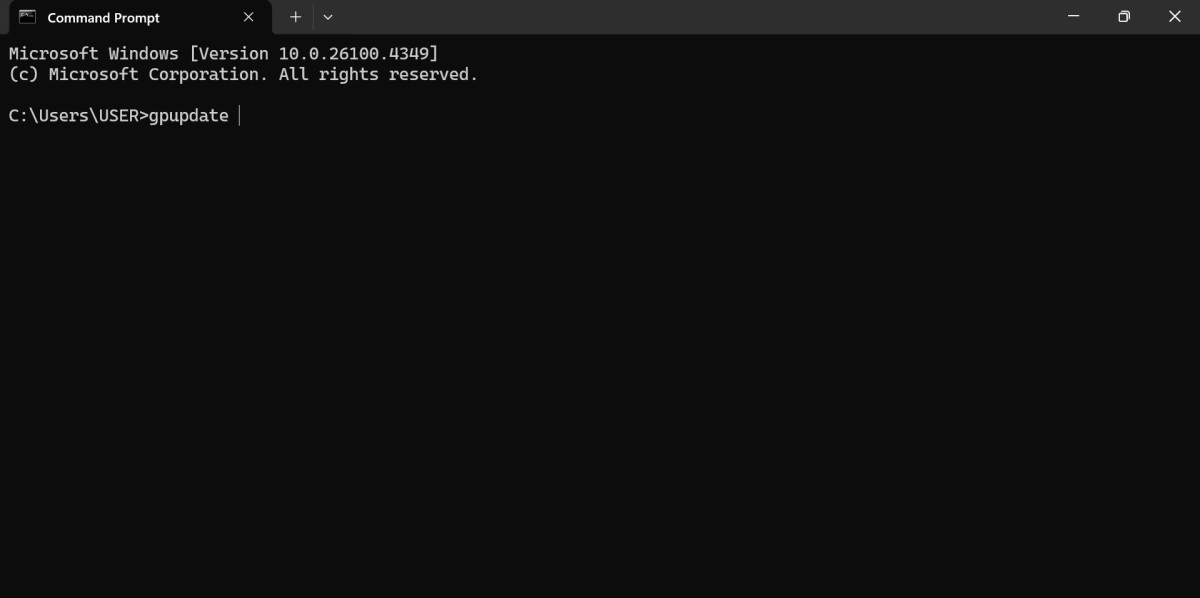
The gpupdate command is an important command that updates Group policy settings on Windows computers. It can be used to force a group policy update for managed computers without restarting the workstations. IT professionals should know how to use the gpupdate command, which can be used in several ways.
Running GPUpdate in Command Prompt
You will need to run gpupdate in the command line terminal to update the settings of workstations managed by Group Policy Objects via Active Directory on Windows. There are several parameters that you can use for specific use cases.
You will need to open a command prompt and run it as an administrator to use the command prompt gpudate.
Forcing Group Policy Updates Across Multiple Computers
To force gpupdate on multiple computers, which allows you to update group policies remotely without restarting them, type gpupdate /force. This will force all group policies to be applied.
You can also target compute or user policies. To do that, you will need to use the parameter /target:{computer|user}. You can choose between computer or user. For example, you can type gpupdate /target:{user} to only update user policies and not computer policy settings.
How Long Does It Take to Run GPUpdate?
How long it takes to run gpupdate depends on how complex the Group Policy Objects are, how many settings have been changed, and how many computers the settings need to be reapplied to. In some cases, it can take just a few seconds; in other cases, it can take a few minutes or more.
Note that you can set a specified time limit to wait before returning to the command prompt. In this case, after the specified time limit, you will return to the command prompt, even if the gpupdate command did not finish. You will then be able to run other commands, as long as they are not dependent on the gpupdate command being completed.
To do that, use the parameter /wait:<VALUE>. Insert a value for how many seconds you want to wait (by default, it will be 600 seconds, or 10 minutes). This is the maximum; if the update finishes quicker, you will return to the command prompt quicker.
You can also set the value to 0, which means you will not wait at all, or -1, which means you will wait indefinitely until the gpupdate command actually finishes processing.
The Functionality of GPUpdate Force
The /force parameter allows you to force all group policy settings to be reapplied, including the ones that were not changed.
If you don’t type the /force parameter, the gpupdate command will work, but it will only reapply settings that have changed, not all settings. Using the /force parameter is the better option, because it makes sure that all settings are reapplied consistently. However, it could take a bit longer and require more processing power and time.
Does GPUpdate Force Require a Reboot?
No. Typically, gpupdate avoids the need for a reboot. After rebooting, the new settings would typically be applied upon startup. However, by using gpupdate, you avoid the need for this.
However, there are certain Group Policy client-side extensions that may require a reboot, even with gpupdate. These extensions, such as computer-targeted software installs, would not update policy settings in the background.
In this case, you can actually force a reboot by using the /boot parameter. However, this is not needed in most cases; only if you have such extensions.
Conclusion: Why and When to Use GPUpdate /Force
So, when should you use gpupdate /force? You can use this command to apply policy changes instantly. It’s a great option for when you want to update policy settings immediately without waiting for users to reboot their computers. It’s a simple command to learn and very useful for IT professionals.








